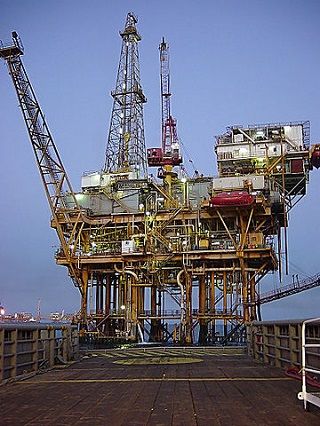From Guest Blogger Brandon Peters: Turning Oil Rigs Green
Oil rigs today are seen as a symbol of dirty energy, and there are a whole lot of them – over 4,000 oil rigs in the Gulf of Mexico alone. And while they’re built to last through all sorts of stresses, like storms, the ocean’s constant wear, and the pressures of oil gushing out from deep beneath the ocean floor, their usefulness is by definition limited: the oil eventually runs out, and unless they’re towed to another nearby drilling site, the usual choices are to tow them to shore and dismantle them or to turn them into artificial reefs.
Although these options will ideally occur after they’ve paid an ROI several times over their cost, both still seem like a waste of the labor, energy, and resources used to construct the rigs. From an environmentalist standpoint, toppling them for use as artificial reefs is even less effective than keeping them upright – keeping the rig vertical allows more biodiversity to flourish in the rig’s underwater structure.
Various uses for decommissioned oil rigs have been proposed, from turning them into eco resorts, to using them for aquaculture, for wind farms, or for residences. Since the market for oil rigs as real estate is probably not going to be very large, it’s a safe bet to say that the best way to use most of the rigs is for aquaculture and/or alternative energy. Given differences in what each of these activities needs, no one site will probably be good for all of these purposes, with the best pairings being wind and wave power generation for high-flux sites and fish and seaweed farming for more placid waters. Wind production has always been better offshore than on land, and using both wind and wave power for power generation has additional synergy in that using two different sources should help even out the power supplied.
Fish and seaweed farming are also synergistic in that seaweed help to filter the waste produced by fish farming and provide an extended lattice for small fish to shelter in. At the same time, the seaweed has improved growth rates from using the waste matter as fertilizer. For large rigs, there’s even ample space to put an onboard processing plant, so instead of piping crude ashore, it can be biofuel instead. Having aquaculture in open water also allows us to feed the ever-growing consumer demand for seafood without taking up more shoreline space, which is already scarce, what with the demand for housing real estate, in-place aquaculture facilities, and needed wildlife preserves, among other things.
While some might think converting oil rigs from their original use to such variant purposes will need a lot of investment, a lot of the infrastructure needed is already in place, including power lines that supply a lot of rigs with electricity, which can be converted to carrying electricity away from the rig rather than toward it. Where such lines don’t exist, pipelines can be converted to carrying electrical power. For seaweed and aquaculture the investment will probably be a lot lower than for alternative energy, and the day may not be too far off when the technology initially developed for the oil industry becomes the anchor that allows us to use the ocean’s resources in a sustainable way.
Brandon Peters is an entrepreneur, a writer, and an avid observer of both the oil industry and alternative energy.


Great article – good solid thinking here. I would support taking a few of these rigs and turning them into working laboratories where scientists and entrepreneurs can collaborate to test the economic viability of different applications,
Sign me up immediately as the Lithium -ion battery expert!
Those oil rigs are already used as fish farms. Just ask anyone who fishes offshore in the Gulf of Mexico. Whether it is pelagics like tuna or bottom feeders like snapper those rigs are fishing gold mines due to the amount of baitfish their structures attract.
In addition, the pipelines are also fishing gold mines and any fisherman worth his salt has a list full of numbers where the good sections of pipeline are at.
IMHO, the best use of an old oil rig would be to convert it into a hotel where fisherman could tie up for the night, refuel and grab a beer and a bite to eat. Especially if one of those no longer being used to drill for oil rigs happens to be near the loop current where the billfish like to hang out.